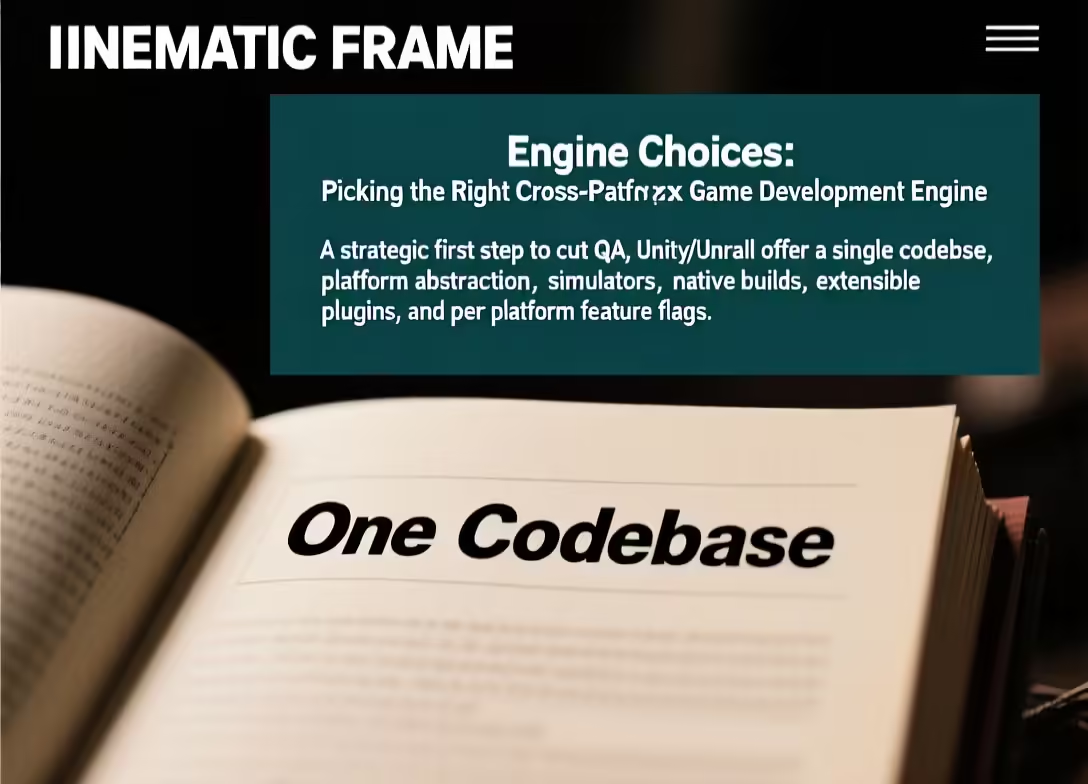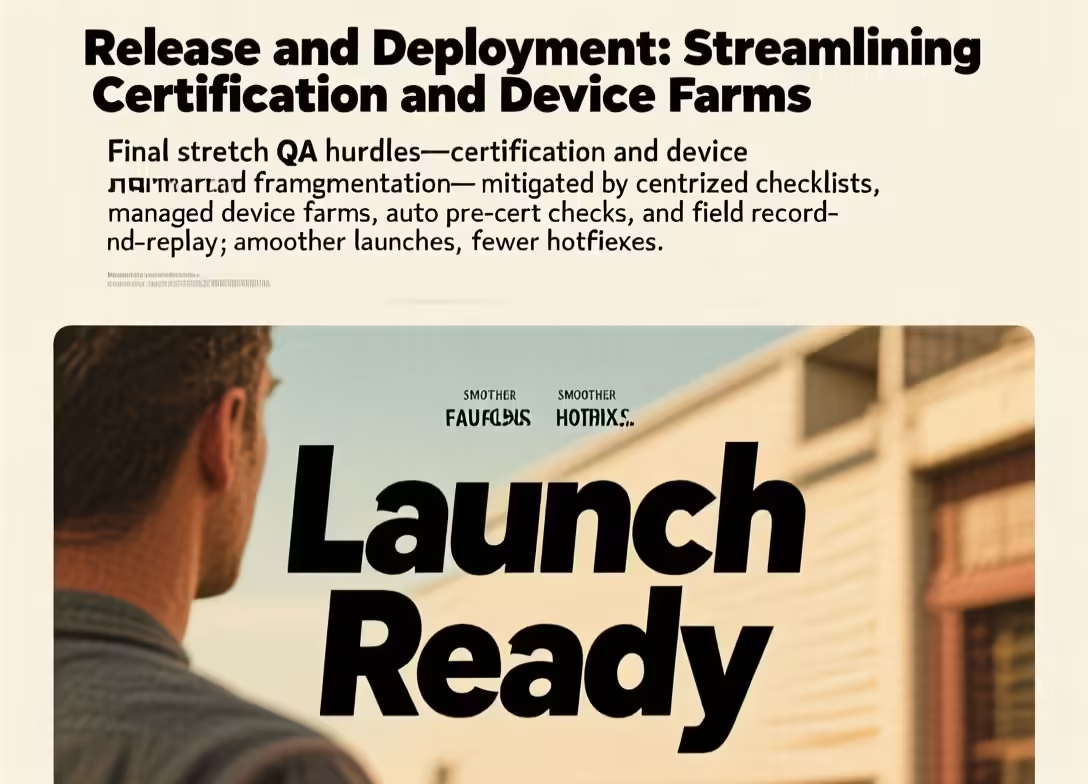5. Engine Choices: Picking the Right Cross-Platform Game Development Engine
Choosing a game engine is the strategic first step for any studio aiming to minimize QA overhead. Engines like Unity and Unreal provide a single codebase, platform abstraction layers, and built-in device simulators that let teams catch many platform-specific issues earlier in development.
By committing to an engine that supports native build targets and extensible plugins, studios avoid maintaining parallel code paths for rendering, input, and asset pipelines—this alone often trims repeated QA cycles. Many teams also pair engine-level feature flags with platform-specific modules so testing can target only the divergent surfaces rather than the whole game.
() (Source)

4. Unified Tooling: QA and Build Tools That Shrink Testing Time
Standardizing on a central set of game development tools — automated test runners, device farms, and telemetry dashboards — converts QA from a manual bottleneck into a predictable pipeline. Tools that integrate with version control and continuous integration allow nightly test suites to run across simulated and physical devices, filing platform-specific tickets automatically when regressions appear.
Automated QA scripts that replay user flows on both mobile and console builds can catch UI layout breaks, input mapping errors, and memory spikes before human testers see them. The emphasis is on cross-platform techniques like shared test cases, parameterized builds, and environment virtualization, which cut duplicated testing effort by up to half in many shops.
() (Source)

3. Performance Parity: Profiling for Console, PC, and Mobile
Performance tuning across architectures is where cross-platform strategies really earn their keep. Instead of separate performance teams, studios adopt portable profiling workflows—common metrics, standardized scenes, and consistent input traces—to compare CPU, GPU, and memory behaviour across targets.
Using a common instrumentation layer and exporting traces into a unified format lets engineers spot platform-specific bottlenecks without re-running tests under different tooling. This reduces the back-and-forth between dev and QA because performance regressions are reproducible and documented in the same way on every platform, speeding triage and fixes.
() (Source)

2. Automated Build Pipelines for Multi-Platform Game Development
A disciplined build pipeline is the backbone of shipping to multiple storefronts. Automated pipelines that produce artifact variants for consoles, PC, and mobile save QA from manually creating and distributing platform-specific installs.
Best practice pipelines include incremental builds, canonical packaging steps, and post-build verification tests that validate signature, DRM hooks, and basic launch behaviour. When pipelines also publish telemetry hooks and crash-reporting stubs automatically, QA gets immediate visibility into early adopters’ crashes without additional instrumentation effort.
That leads to faster regression detection and a significantly reduced QA cycle for each platform iteration. () (Source)

1. Release and Deployment: Streamlining Certification and Device Farms
Final stretch QA often trips on certification requirements and device fragmentation. Cross-platform approaches mitigate both by centralizing certification checklists and using managed device farms for real-world validation.
Automated pre-certification checks—packaging, accessibility, region settings, and performance budgets—can be run before human submission to platform holders, avoiding costly re-certifications. Meanwhile, record-and-replay on physical devices ensures issues found in the field are reproducible back in-house.
The result is smoother launches, fewer hotfixes, and a smaller QA backlog across the entire release slate. ()Conclusion — practical next steps for teams Consolidating around purpose-built engines, unified tooling, repeatable performance profiling, and automated build pipelines gives teams a clear path to cut QA time in half and improve launch stability.
Studios focused on cross platform game development gain not just velocity but predictability: fewer surprises, leaner QA cycles, and more time to polish the play experience. The next practical move is to audit current pipelines, standardize on a minimal set of cross-platform tools, and introduce automated gates that stop regressions before they reach QA.
🚀 () (Source)

